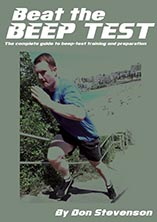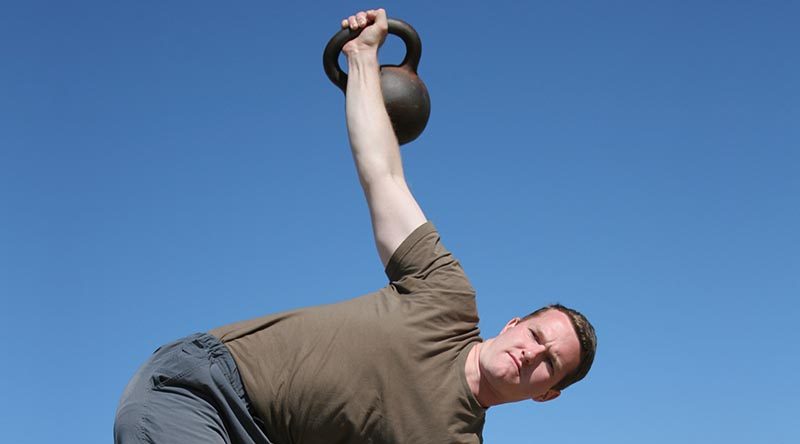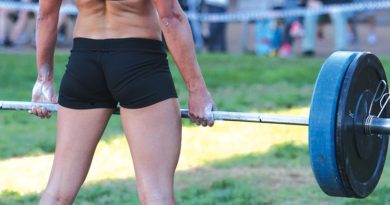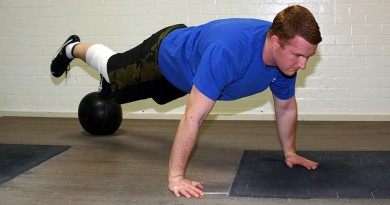Military Fitness – Part 16

Without a doubt, kettlebell training is becoming one of the most popular ways to train for military fitness, and a lot of people have got a grasp of the basic exercises and workouts. While swings, snatches, Turkish getups and presses will always be the foundation of kettlebell training, once you’ve mastered the basics there are some advanced exercises and workouts that will give you an extra edge in strength, power, coordination and endurance.
Advanced exercises
There are a huge range of advanced kettlebell exercises and, depending on what you are training for, you should be able to find drills that are specific to the demands of almost every sport.
For military personnel, here is a shortlist of some of the exercises we like to use. The aim with each of these exercises is to provide a new challenge by placing greater demands on your strength and coordination.
 Beat The Beep Test by Don Stevenson is an 89-page complete guide to beep-test training and preparation.
Beat The Beep Test by Don Stevenson is an 89-page complete guide to beep-test training and preparation.
20% of proceeds from the sale of this e-book will be donated to Soldier On
Swings with movement
The basic kettlebell swing is one of the best conditioning exercises around, but to make it more challenging you can add various movement patterns. Try the following variations.
Walking swing – as you complete each swing and the kettlebell is out in front of you, take a short step forward before letting the kettlebell swing back down for the next rep. Instead of a specified number of reps, try walking swings for distance. Start out with 10 to 15m and work up to 30m. You’ll be surprised how much more difficult this is.
Swings with turns – perform a swing and, as you hit the top position come up on one foot and pivot 90 degrees to the left or right. On the next swing, pivot back to the start position and repeat on the opposite side. Swings with turns will teach you to coordinate your foot movements under load and require a very high level of concentration!
Swing obstacle course – set out a series of markers at various distances and positions and swing your way through them using walking swings and swings with turns.
Harder variations of other basic drills
With a little thought, many of the other basic drills can be made more difficult.
Try the following examples.
Turkish get up – to make the TGU more difficult, try performing it without using the free hand to push off the ground or stabilise you. This requires a completely different technique, strong core and high level of balance and control.
Bottoms up press – grab a kettlebell, flip so the ball is pointing toward the sky and then try to press it overhead. This builds awesome grip strength and shoulder stability. For your own safety, start light and make sure to keep your free hand between the kettlebell and your face in case something goes wrong.
Overhead squats – Press a kettlebell overhead and then squat all the way down. This will work your core, legs and shoulders like never before.
Hand-to-hand drills
If you’ve mastered all of the above, then you might want to add some kettlebell hand-to-hand or juggling drills.
When practicing these, make sure you do it outside somewhere that you won’t get in trouble for digging up the ground (parade grounds are generally a bad idea!). Also make sure that you remain alert and get out of the way when, inevitably, you miss a catch and drop the kettlebell.
The basic drill for kettlebell juggling is the flip and catch. As you hit the top of a swing, push the handle down toward the ground slightly as you release your grip. The kettlebell handle should spin around the ball and you’ll be able to get your hands back on the kettlebell before it has fallen too far.
Once you master this, you can flip the handle forwards and backwards with one hand or two.
Further juggling drills include catching the kettlebell in the palm of the hand, passing it around the legs and back and numerous combinations of these drills into flowing workouts.
Workouts
Military work often demands the performance of complex skills under conditions of physical fatigue. Unfortunately, most people tend to separate their fitness and skill training and then, when the situation demands both, performance is compromised.
One way to train for this situation is to mix short, hard bouts of kettlebell conditioning with skills like weapon handling drills.
Simply set up a circuit with two to three kettlebell exercises such as snatch, walking swings or heavy presses, and do one to two minute of exercise interspersed with two or three skill activities that are relevant to your job.
.
.
.
.
.
.

.
.







